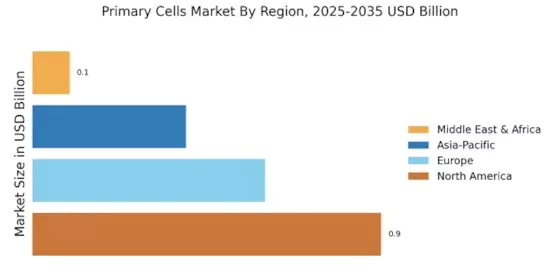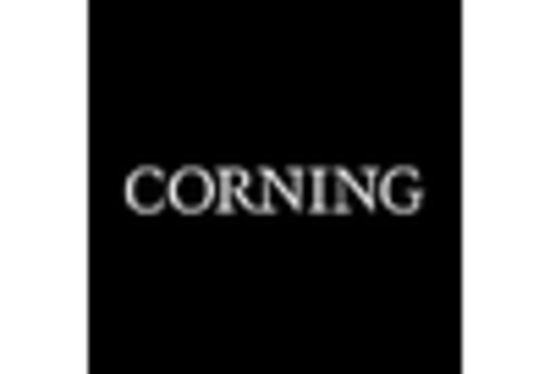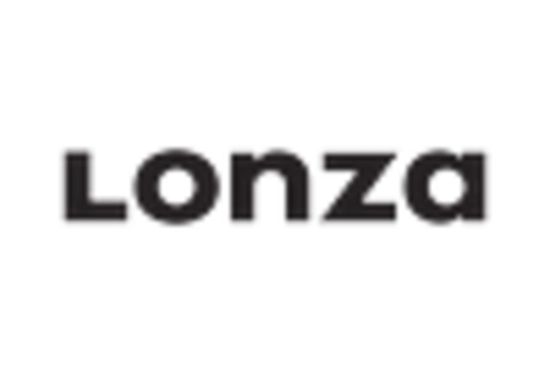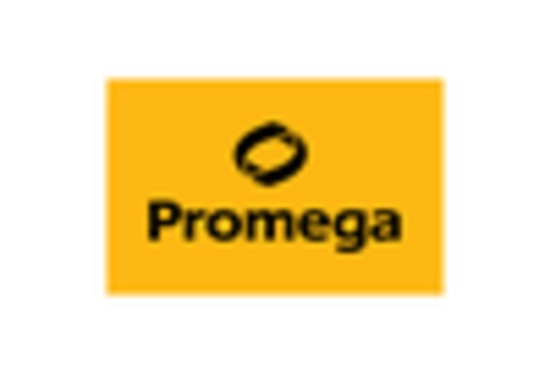The Primary Cells Market is currently characterized by a dynamic competitive landscape, driven by innovation, strategic partnerships, and a focus on regional expansion. Key players such as Thermo Fisher Scientific (US), Merck KGaA (DE), and Lonza Group (CH) are actively shaping the market through their operational strategies. Thermo Fisher Scientific (US) emphasizes innovation in product development, particularly in cell culture technologies, which positions it favorably against competitors. Merck KGaA (DE) focuses on expanding its global footprint, enhancing its supply chain capabilities to meet increasing demand. Meanwhile, Lonza Group (CH) is leveraging strategic partnerships to enhance its service offerings, particularly in the biopharmaceutical sector, thereby influencing the competitive dynamics of the market.
The business tactics employed by these companies include localizing manufacturing and optimizing supply chains to enhance efficiency and responsiveness to market demands. The Primary Cells Market appears moderately fragmented, with several key players exerting influence over various segments. This fragmentation allows for a diverse range of products and services, fostering competition that drives innovation and quality improvements across the sector.
In August 2025, Thermo Fisher Scientific (US) announced the launch of a new line of primary cell culture products aimed at enhancing research capabilities in regenerative medicine. This strategic move is likely to solidify its market position by addressing the growing demand for advanced cell culture solutions, thereby attracting a broader customer base. The introduction of these products not only reflects the company's commitment to innovation but also its responsiveness to emerging research trends.
In July 2025, Merck KGaA (DE) completed the acquisition of a biotechnology firm specializing in cell-based assays, which is expected to enhance its portfolio in the life sciences sector. This acquisition appears to be a strategic maneuver to bolster its capabilities in high-demand areas, potentially increasing its market share and reinforcing its competitive edge. By integrating these advanced technologies, Merck KGaA (DE) is likely to offer more comprehensive solutions to its clients, thereby enhancing customer loyalty and satisfaction.
In September 2025, Lonza Group (CH) entered into a strategic partnership with a leading academic institution to develop innovative cell therapies. This collaboration is indicative of a broader trend towards academia-industry partnerships, which may accelerate the pace of innovation in the Primary Cells Market. By aligning with academic research, Lonza Group (CH) is positioned to leverage cutting-edge discoveries, potentially leading to the development of novel therapeutic solutions that could redefine treatment paradigms.
As of October 2025, the Primary Cells Market is witnessing trends such as digitalization, sustainability, and the integration of artificial intelligence in research and development processes. These trends are reshaping competitive strategies, with companies increasingly forming strategic alliances to enhance their technological capabilities and market reach. The shift from price-based competition to a focus on innovation, technology, and supply chain reliability is becoming evident, suggesting that future competitive differentiation will hinge on the ability to deliver advanced, reliable, and sustainable solutions.


















Leave a Comment